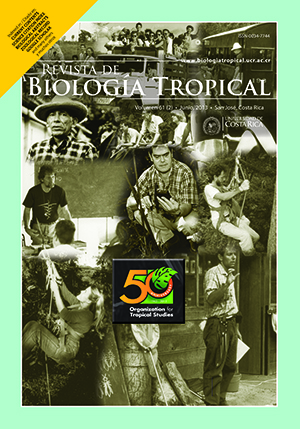Abstract
Menidia humboldtiana, a native species of Mexico, is a common inhabitant of local reservoirs. It represents a highly appreciated fish of economic importance in the central part of the country because of its delicate flavor. Trophic behavior of this species is important to understand the relationships with other fish species in reservoirs. With the aim to study this specific topic, the trophic spectrum, selectivity coefficient and overlap, were determined among different sizes of the Silverside M. humboldtiana. For this, both zooplankton and fish samples were taken during four different seasons of 1995. Zooplankton samples were taken through a mesh (125micron), and all organisms were identified to generic level. Fish were captured and grouped into standard length intervals per season, and the stomach contents were obtained and analyzed. Trophic interactions included the stomach contents analysis (Laevastu method), the coefficient of selection (Chesson) and the trophic overlap (Morisita index modified by Horn) between sizes. A total of 14 zooplankton genera were identified, of which Bosmina was the most abundant (29 625 ind./10L) followed by Cyclops (9 496 ind./10L), during the spring. Small size fishes (1-4.9cm) consumed high percentages of Cyclops in the spring (61.24%) and winter (69.82%). Ceriodaphnia was consumed by fish sizes of 3-10.9cm (72.41%) and 13-14.9cm (95.5%) during the summer; while in autumn, small sizes (1-4.9cm) ingested Mastigodiaptomus and Ceriodaphnia; Daphnia and Bosmina were consumed by fishes of 5-8.9cm and the biggest sizes (9-14.9cm) feed on Ceriodaphnia. M. humboldtiana makes a selective predation by the genera Ceriodaphnia, Daphnia, Mastigodiaptomus, Bosmina and Cyclops, depending on the size length interval. The trophic overlap was very marked among all sizes on spring, autumn and winter, unlike in summer fish of 1-2.9 and 11-12.9cm did not show overlap with other length intervals. M. humboldtiana is a zooplanktivore species, which performs a selective predation and a marked trophic overlap between the different fish sizes.






